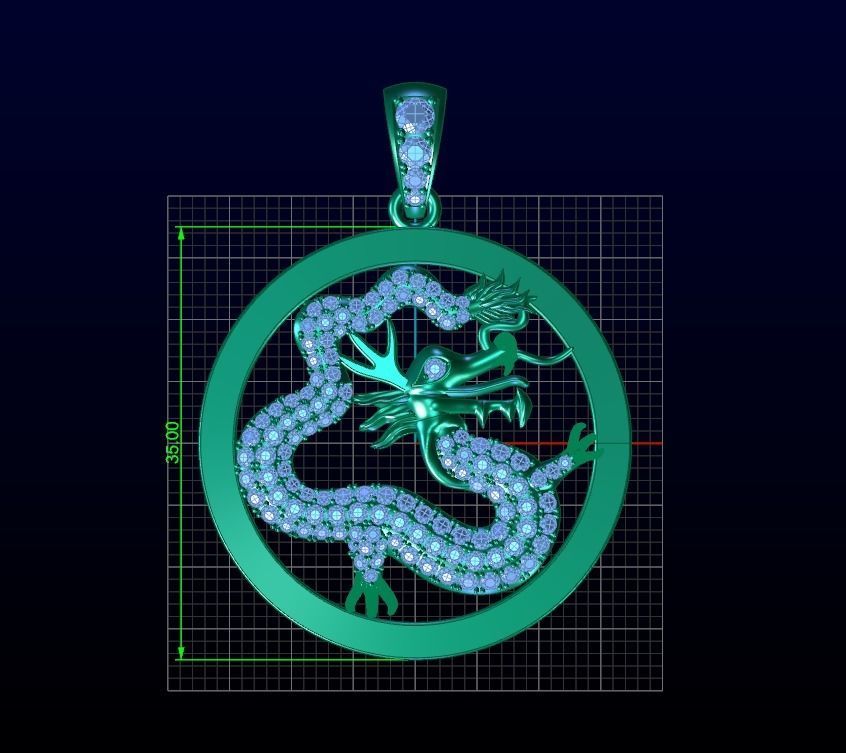
Chinese Dragon Pendant 3D print model
Chinese Dragon Pendant Historically, the Chinese dragon was associated with the emperor of China and used as a symbol to represent imperial power. Liu Bang, the founder of the Han dynasty, claimed that he was conceived after his mother dreamt of a dragon.[4] During the Tang dynasty, emperors wore robes with dragon motif as an imperial symbol, and high officials might also be presented with dragon robes. In the Yuan dynasty, the two-horned, five-clawed dragon was designated for use by the Son of Heaven or emperor only, while the four-clawed dragon was used by the princes and nobles.[5] Similarly, during the Ming and Qing dynasty, the five-clawed dragon was strictly reserved for use by the emperor only. The dragon in the Qing dynasty appeared on the flag of the Qing dynasty.[6]
The dragon is sometimes used in the West as a national emblem of China, though such use is not commonly seen in the People's Republic of China or Taiwan. Instead, it is generally used as the symbol of culture. In Hong Kong, the dragon was a component of the coat of arms under British rule. It was later to become a feature of the design of Brand Hong Kong, a government promotional symbol.[7]
The Chinese dragon has very different connotations from the European dragon – in European cultures, the dragon is a fire-breathing creature with aggressive connotations, whereas the Chinese dragon is a spiritual and cultural symbol that represents prosperity and good luck, as well as a rain deity that fosters harmony. It was reported that the Chinese government decided against using the dragon as its official 2008 Summer Olympics mascot because of the aggressive connotations that dragons have outside of China and chose more friendly symbols instead.[8] Sometimes Chinese people use the term Descendants of the Dragon (simplified Chinese: 龙的传人; traditional Chinese: 龍的傳人) as a sign of ethnic identity, as part of a trend started in the 1970s when different Asian nationalities were looking for animal symbols as representations. For example, the wolf may be used by the Mongols as it is considered to be their legendary ancestor.[4][6][9]
State usage





